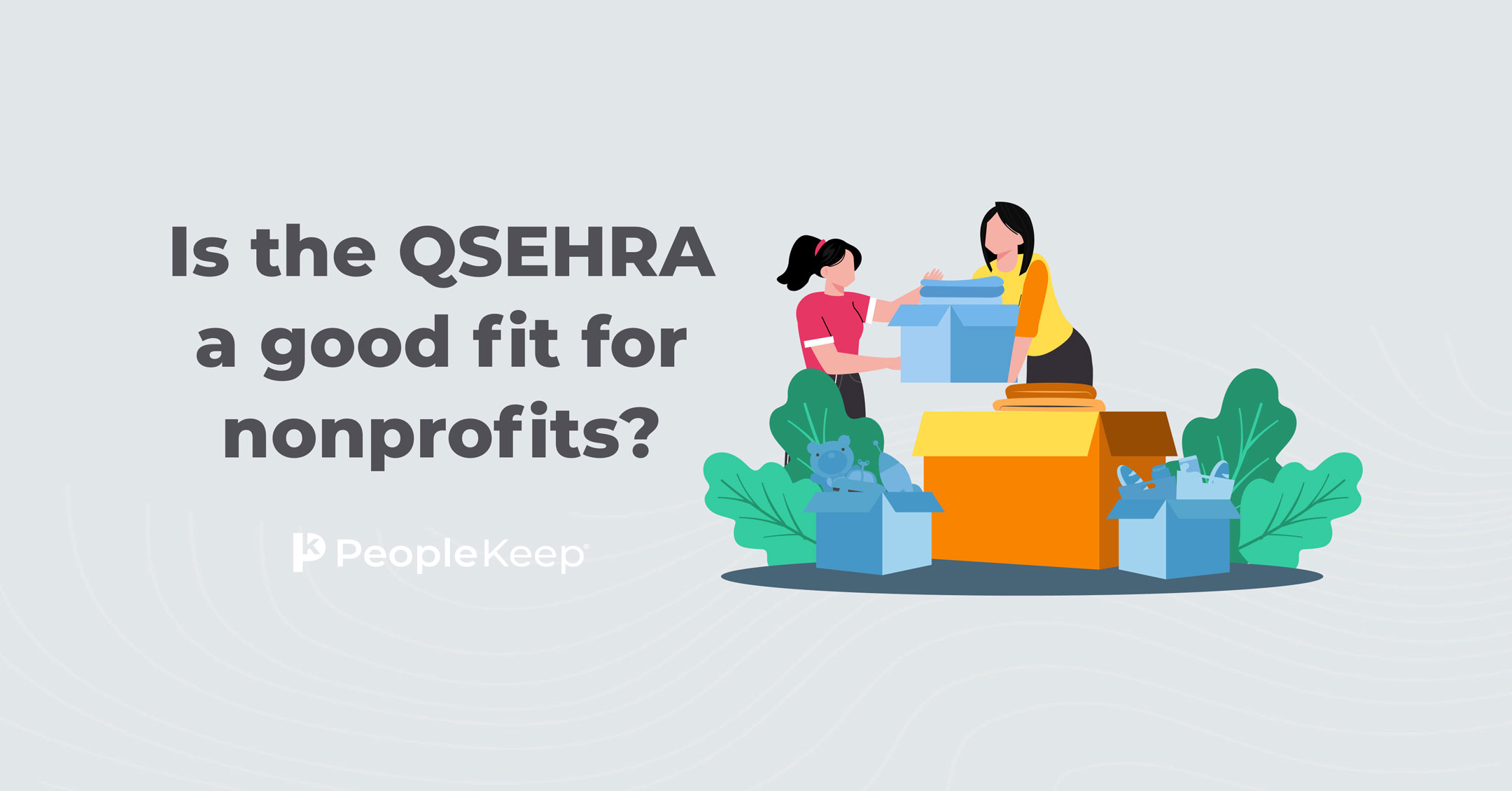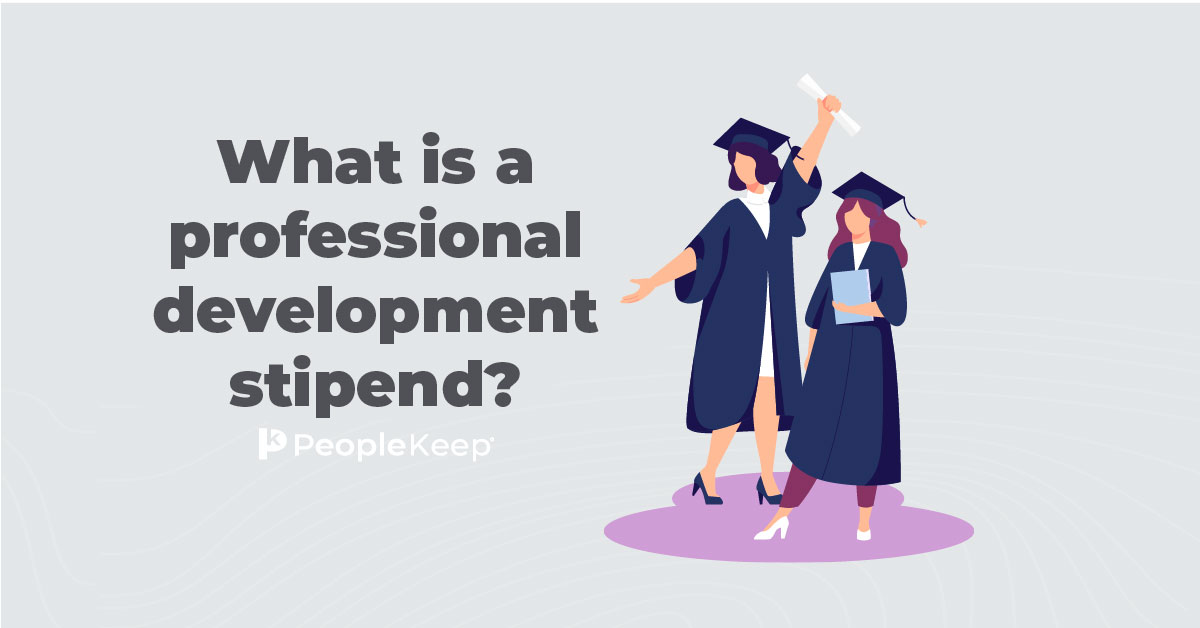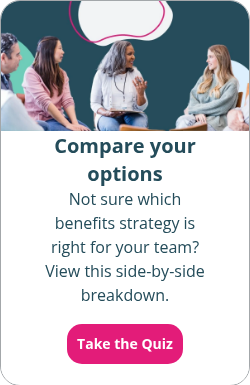How to attract Gen Z employees
By Chase Charaba on September 17, 2024 at 8:00 AM
Generation Z is entering the workforce in record numbers. Now, potential employers are looking for the best ways to attract and hire these young workers.
According to the World Economic Forum1, Generation Z will represent 27% of the workforce by 2025. This makes catering your employee benefits package to fit their needs essential. Otherwise, you'll lose out on this large cohort of talent.
Benefits have always been vital for attracting and retaining employees of any generation. However, the wants and needs of younger generations differ from their parents or grandparents. Many traditional benefits aren't as appealing or flexible as they need to be to hire the newest generation of employees.
In this article, we'll explain who's considered part of Gen Z, how to attract them, and what benefits these young workers want in the workplace.
In this blog post, you'll learn the following:
- Why remote work is a higher priority compared to other job factors for Gen Z employees.
- Why it's important to take diversity and inclusion into account when hiring Gen Z job seekers.
- Why you need to offer health benefits to attract the youngest generation of workers.
Who's considered part of Gen Z?
Generation Z is the generation following the Millennial Generation, or Gen Y, but preceding Generation Alpha. There's no clear definition of where Gen Z begins and Millennials end, as many younger Millennials and older Gen Zers share similar traits. But there are two common definitions.
Many media outlets use the range of those born from 1995 to the early 2010s as Gen Z. But Pew Research Center uses 1997 as the starting year and 2012 as the endpoint. The U.S. Census and the Library of Congress cite Pew's definition of Gen Z.
Many refer to those born in 1996 and 1997 as "cuspers" or "Zillennials." These terms arose because they have traits of both Gen Z and Millennials. They likely have more in common with their immediate cohort than with younger Gen Zers or older Millennials.
Members of Gen Z are also called the digital generation, Zoomers—in reference to Baby Boomers—and iGen.
While Millennials remain the largest living generation in the U.S., Gen Z has surpassed every other generation worldwide, including the Baby Boomer generation. They make up 30% of the global population2.
With more than 68 million Gen Zers in the U.S., organizations need to prepare to welcome more of this generation of workers in the years to come.
What is Gen Z most interested in?
With their unique set of skills and perspectives, Gen Z job seekers can bring fresh ideas and innovation to your organization. Let's go over some tips on how to attract and retain Gen Z talent.
Flexible work arrangements and work-life balance
Gen Z employees prioritize work-life balance in their personal and professional lives. This is a big reason why they value flexibility in their work arrangements. They prefer to work individually rather than in teams. They often juggle multiple side gigs, such as freelance work and their own businesses. They need this flexibility to pursue their interests and work independently at their own pace.
Tanya Lamont is the CEO of Conversational3, the leading provider of virtual receptionist services. She's found that Gen Z employees, more than any other generation, prioritize flexibility and personal growth.
"I offer flexible work schedules, which I think is key to attracting them," Lamont said. "I’ve noticed that they value having control over their time, so I give them the option to set their own work hours, and it’s made a big difference in retention."
To entice these younger employees, consider following Lamont's lead and offering flexible work environments or remote work opportunities for better work-life integration. These hybrid work models are benefits you want to highlight in your job descriptions to attract Gen Z job applicants.
According to FlexJobs’ 2024 Work-From-Anywhere Survey4, 50% of employees are open to taking a pay cut in exchange for the option to work from anywhere. Among them, 26% would agree to a 5% reduction in salary, while 24% would accept a decrease of either 10% or 15%. The younger generations of workers show the highest willingness to accept these tradeoffs.
Career growth and professional development opportunities
Gen Z employees are ambitious. They're eager to learn and excel in their careers. Offer growth opportunities through professional development, mentorship programs, and clear career paths for advancement within your organization. Show them you value their career growth and that you're willing to invest in their future.
While also providing flexibility, Lamont emphasizes personal development for her employees.
"I offer professional training programs that I know appeal to them because they’re always looking for ways to grow and upskill," Lamont said. "When I offer clear paths for advancement and skill-building, I see a lot more enthusiasm in the workplace."
Providing growth opportunities is a great way to attract and retain Gen Zers. As they advance up the career ladder, they'll feel more stable. This makes them more likely to stick with your organization instead of looking for better job opportunities elsewhere.
Understand their core values
Gen Z employees value diversity, inclusion, and social responsibility. They want to work for companies that align with their values and strive to make a meaningful impact on society and the environment. Showcase your company's commitment to these values in your job postings and corporate culture.
A commitment to diversity and inclusion in the workplace is also important to Gen Z because they're the most racially diverse generation in the U.S. According to PRRI5, 49% of Gen Z are Caucasian. That's a smaller share than what you'll find for Millennials, which are 56% white.
Additionally, PRRI found that many Gen Zers6 feel comfortable using gender-neutral pronouns—more than any other generation. As a result, they're looking for organizations that focus on diversity and sexual orientation and do their best to make everyone feel like they belong.
An accepting and inclusive environment will also help Gen Zers feel welcome in the workplace, improving their engagement levels.
Modern hiring process
Gen Z employees are digital natives who are comfortable with technology. These job seekers don't want to apply for jobs in person or visit job fairs. They're more interested in an easy online application that works on mobile devices. Ensure your company uses modern and efficient tools to streamline the application process. You'll also want to develop a careers page on your company website.
Gen Z applicants are cautious about money, their financial future, and the economy. Your job postings should address their concerns by including the following:
- A salary range
- Benefits
- Opportunities for career development
- Company culture
- Job requirements
Lastly, your hiring process should be quick. A Gen Z job seeker isn't likely to wait around for a decision. They expect an immediate response that you've received their application and a timely response indicating whether you're interested in them or not.
Embrace social media
Due to their digital fluency, Gen Z employees are extremely active on social media platforms. They often use them to research and connect with prospective employers. A CareerArc study7 found that 48% of Gen Z employees found their current jobs through social media.
Establish a strong social media presence and engage with Gen Z applicants through platforms like LinkedIn, Instagram, and X, formerly known as Twitter. Share company updates and employee spotlights, and showcase your company mission.
To further strengthen your brand and employee engagement, you can encourage your workers to share company content on their personal social channels.
What does Gen Z want from employers?
Along with fair compensation for their work, Generation Z desires several benefits and perks in their ideal workplace. To entice young talent, you'll need to ensure that your benefits are flexible and individualized.
Despite what some claim, Gen Z still values traditional benefits such as health insurance and retirement plans. But, they place greater value on more personalized benefits and immediate employee perks compared to other generations.
Here are some of the benefits and perks that Gen Z wants most in the workplace:
- Health benefits
- Mental health benefits
- Wellness benefits
- Paid time off (PTO)
- Remote work
- Flexible work schedules
- Parental leave
- Dental insurance
- Vision insurance
- Retirement benefits
According to Deloitte8, 25% of Gen Zers choose to work at their current organization for good work-life balance. Young people want to have the option to travel, take mental health days, and support their new and growing families. Not offering generous PTO will likely keep Gen Z candidates away.
While Gen Z doesn't have as much student loan debt as the previous generations, student loan repayment and tuition reimbursement remain attractive employee benefits. According to Experian9, the average student loan debt among Gen Z in 2023 was $29,820. With tuition becoming more expensive, this number will likely increase as more Gen Zers head to college.
Commuter benefits are also increasingly desired by younger generations who work in person, especially for public transportation fares or mileage reimbursement.
How to offer a flexible health benefit that attracts Gen Z workers
Much like other generations, Generation Z values healthcare benefits. However, Generation Z employees are young, so they don't necessarily need the same level of employer-provided health coverage as older employees. Traditional group plans—which many employers provide—can be expensive for employers and employees, and likely won’t be utilized by Gen Z at the same rate as older employees. This, in turn, means they may see less value in their medical benefits than older generations.
Gen Z wants more flexibility in all aspects of the workplace, including health benefits. The rigid structure of a group health insurance plan doesn't provide the level of personalization that Gen Z has come to expect.
Luckily, there are health benefit options that are flexible, personalized, and easy to administer, like health reimbursement arrangements (HRAs).
Health reimbursement arrangements (HRAs)
HRAs are great options for businesses of all sizes looking to provide more flexibility than traditional group health insurance plans. With an HRA, employers can reimburse employees for their individual health insurance premiums and qualifying out-of-pocket medical expenses.
You can set monthly or annual allowances for your employees. Once you approve an expense, you simply reimburse your employees on their next paycheck.
Best of all, HRAs are tax-free, meaning you don't have to pay payroll taxes on reimbursements for eligible expenses. Your employees also don't have to pay income taxes on their reimbursements. HRAs allow your Gen Z employees to choose their own individual health insurance plan that best fits their needs. They can also select which eligible expenses they want to have reimbursed up to their set allowance.
Three of the most popular HRA types include:
- Qualified small employer HRA (QSEHRA): The QSEHRA is specifically designed for businesses with fewer than 50 full-time equivalent employees (FTEs). Employees must have a health insurance policy that meets minimum essential coverage (MEC) to participate.
- Individual coverage HRA (ICHRA): The ICHRA is great for businesses of all sizes that want to offer different benefits to different classes of employees. Employees must have a qualifying individual health plan to participate.
- Group coverage HRA (GCHRA): The GCHRA, also known as an integrated HRA, pairs with your group health insurance policy. Those enrolled in your group plan can participate in the HRA.
How to provide wellness benefits
Wellness benefits are one of the top workplace wants for Gen Z talent. This is partly because Gen Zers face more stress and uncertainty than other generations.
A 2024 report from Gallup and the Walton Family Foundation10 shows that Gen Z has the poorest mental health of any generation. With mental well-being needs on the rise, wellness benefits are more important than ever for your employees.
"Gen Z doesn’t just want a paycheck," Lamont said. “They want a healthy life outside of work, too. That’s why I implement wellness programs and encourage mental health days. I’ve found this creates a positive environment where they feel supported, and in turn, I’ve noticed they perform better."
You can implement wellness programs or offer wellness stipends to your employees. Employees can use their wellness stipend on fitness and yoga classes, meditation classes and apps, gym memberships, sleep and nutrition trackers, and more. These activities can have a positive impact on your employees by helping reduce stress and improve the overall health and well-being of your employees. This, in turn, helps them to be more productive at work.
Conclusion
If you want to hire Gen Z employees, you need to refine your recruitment process to their generation. Implementing effective strategies that prioritize inclusivity, career growth, work-life balance, and the use of digital tools can significantly enhance your hiring process for Gen Z candidates.
If you're ready to offer flexible health benefits to your employees, PeopleKeep is here to help. Our personalized benefits administration platform allows organizations to provide HRAs without the hassle.
This blog article was originally published on March 30, 2022. It was last updated on September 17, 2024.
Check out more resources
See these related articles

Best ICHRA vendors: A look at popular ICHRA administrators
Discover the best ICHRA vendors and top administrators. Learn which ICHRA providers offer the best features, support, and value for your business.

Is the QSEHRA a good fit for nonprofits?
Considering the QSEHRA for your nonprofit? Get all the information you need to make an informed decision in this concise guide.

What is a professional development stipend?
By offering a professional development stipend, you encourage your employees to discover new talents and further their abilities through continued education.



